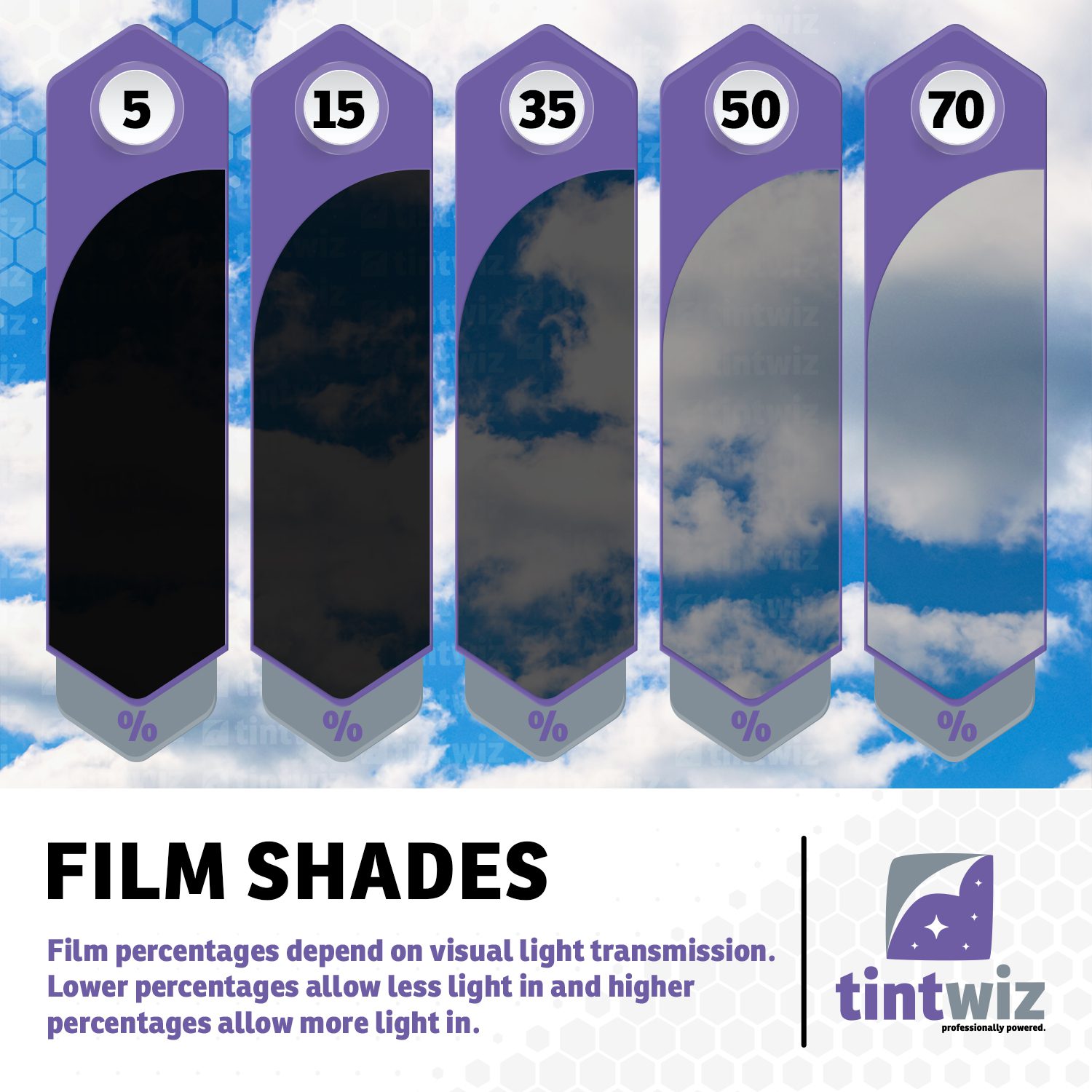Darkest legal tint for Cars in Minnesota
- Windshield: No tint is allowed on the windshield.
- Front Side windows: Must allow more than 50% of light in.
- Back Side windows: Must allow more than 50% of light in.
- Rear window: Must allow more than 50% of light in.
Darkest legal tint for SUV and Vans in Minnesota
- Windshield: No tint is allowed on the windshield.
- Front Side windows: Must allow more than 50% of light in.
- Back Side windows: Any darkness can be used
- Rear window: Any darkness can be used
Please note: The accuracy, completeness, adequacy or currency of the content is not warranted or guaranteed. We are not lawyers or a law firm and we do not provide legal advice. We recommend you consult a lawyer or other appropriate professional if you want legal advice.

Minnesota window tint laws for cars were first passed well over 30 years ago back in 1988. In the subsequent years, Minnesota tint laws have not been intensely overhauled, but many new auto window tint products have been released, such as nanoceramic car window film (originally developed for the aerospace industries), window tints with wide varieties of shades and hues, films that block UV and IR solar energy without darkening windows, and more.
To stay in line with Minnesota tint laws, therefore, it’s not only important to know what the law says about window tint for cars but also to understand the basics of vehicle window tint. To that end, you need to know about visible light transmission, or VLT, above all else. VLT refers to how much of the visible sunlight spectrum can pass through glass (and tint there applied), which effectively means how light or dark and therefore how transparent or opaque the window is. The darker (and more private) the car window, the lower the VLT% is, so 5% VLT, also known as limo tint, is very dark and very private.
Understanding VLT percent is so important because in Minnesota window tint tickets for illegally dark window film can cost hundreds of dollars, and police officers can test window tint VLT on the scene with handheld devices, so any traffic stop could be compounded by a tint violation ticket.
Different Vehicles Have Different Tint Rules in Minnesota
In Minnesota car window tint laws are easy to understand as all windows have the same restrictions, and it must be noted that these restrictions are stricter than you find in many places. Larger vehicles, like SUVs and vans, have more leeway when it comes to tinting most windows, but car owners need not think they are stuck with the rather transparent tint stipulated by law: Minnesota auto tint rules do allow for various exceptions to window tint regulations, if the tint stipulated for cars below does not suit your needs based on a medical issues (or in some cases for other issues, such as for commercial purposes) you may have recourse to legally get darker tint.
Car Window Tint Laws in Minnesota
Minnesota is a rarity among states in that no window tint of any type is allowed on the front windshield of a car, not even down to the AS-1 line. While this can unfortunately mean more issues with sun glare, at least the law is clear cut.
This clear cut approach to car tint laws continues with car window film rules: in Minnesota cars can have window tint a maximum darkness of 50% VLT on all side windows and the rear windshield, and this sedan tint cannot be more than 20% reflective.
50% VLT tint is much lighter than that which is permitted in many states and only provides some privacy to those in the car, but window tint can still be highly effective performance wise when not dark. Even optically clear window films can cut the sun’s glare, making driving safer and more pleasant, and can reduce infrared heat, keeping a car cooler even on hot and sunny days. And high quality window tint of any transparency, from 50% VLT to 99% VLT can block 99% of the sun’s dangerous and damaging UV light, preventing interior fading and cracking that ruins a car’s looks and its resale price.
Window Tint Laws for Larger Vehicles in Minnesota
As with cars, Minnesota law prohibits any and all window tint on the windshield of trucks, SUVs, and vans. Also as with cars, the front side windows of larger vehicles can only be tinted down to 50% VLT at darkest and must be at most 20% reflective.
Beyond that, tint laws in Minnesota for SUVs, trucks, and vans are quite permissive. Any darkness of window tint may be used on rear side windows and the back window as long as the tint is not more than 20% reflective.
Other Window Tint Rules and Exemptions
One thing to note first is that unlike you will find in most states, all colors of window tint are legal in Minnesota; you can have yellow, amber, yellow, silver, gold, and other commonly outlawed window tint colors without concern under present law.
There is also a three percent variance allowed, so if your tint is up to three percent darker than it should be under state law, you will not be issued a citation. (This will not apply to windshield tint, where none is allowed.)
While the state of Minnesota does not require window film manufacturers, installers, or vendors to certify the tint they offer in the state as meeting with state laws, the rules do require placement of a visible sticker between the window film and glass on the driver’s side front window clearly displaying the type of tint used and that it is legal in Minnesota.
Tint law in Minnesota makes no rules relating to side view mirrors when rear window tint is applied, though this is standard in most states.
In keeping with the rules of most states, Minnesota motorists can apply for a medical exemption (or in some cases, as with livery companies, for a commercial exemption) allowing for darker window tint than you can have under standard law. If you suffer from migraines, glaucoma, skin issues, or other medical conditions that may necessitate darker tint than allowed under the law, speak to a doctor about getting a window tint exemption.
Window Tint Violations in Minnesota
Illegal window tint in Minnesota is a civil offense, not a criminal matter, but a single window tint ticket can cost well over a hundred dollars and multiple tickets can be issued at ever higher rates if you don’t get the offending tint replaced, so it’s best not to try to get away with illegally dark window tint to begin with. If you are not sure if your window tint is legal in Minnesota (perhaps you moved a vehicle tinted and registered in another state) you can bring it to a reliable car tint shop or to a state inspection facility to have the window tint inspected and given the OK or for a recommendation to replace it with window tint legal in Minnesota.









